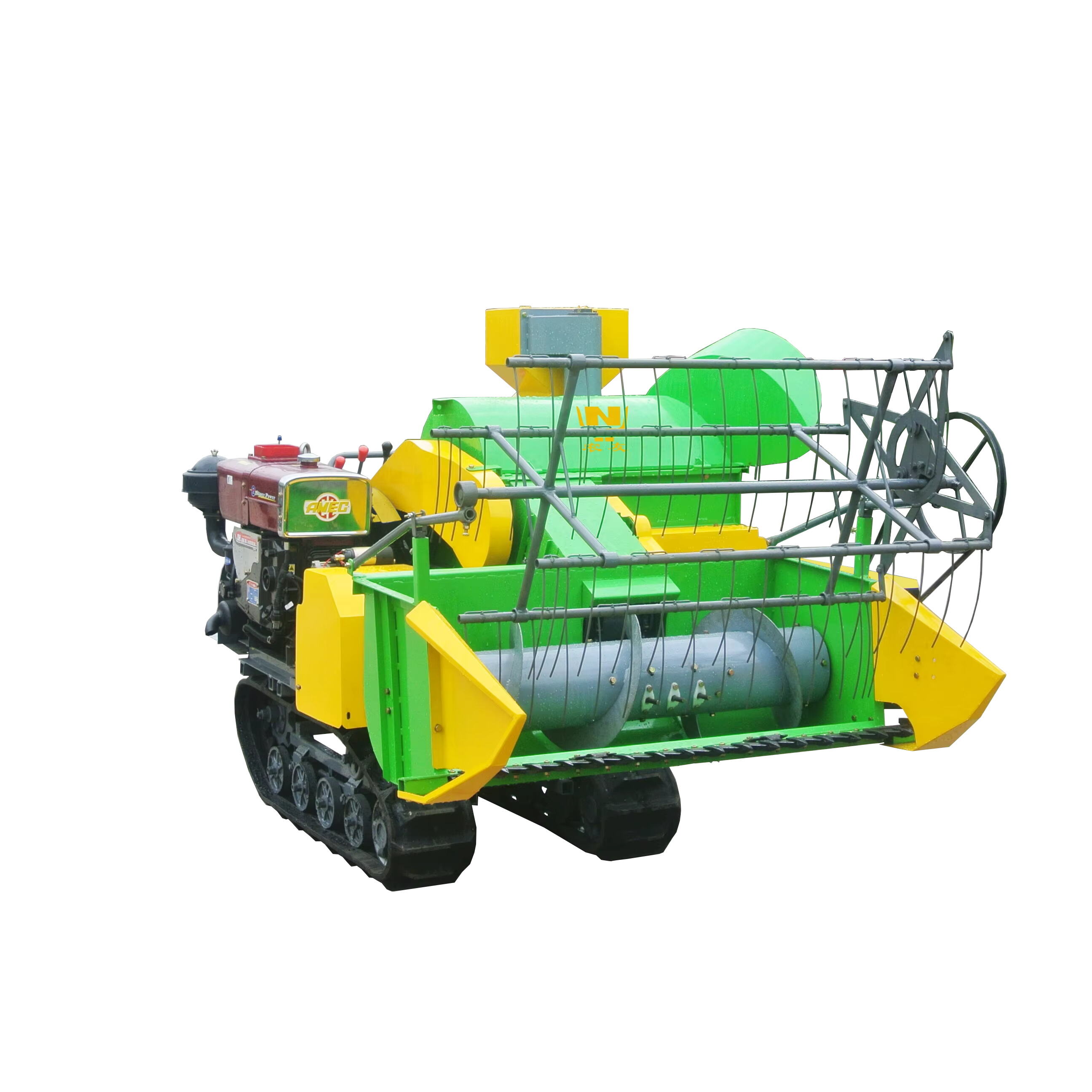Ensuring Longevity and Performance of Your Combine Harvester
A combine harvester is one of the most essential machines in modern agriculture, performing the critical task of harvesting grain crops efficiently. To keep this machine running smoothly over multiple seasons, key maintenance practices must be followed. Proper upkeep not only prolongs the lifespan of your combine harvester but also ensures optimal performance during the busy harvest period, minimizing downtime and repair expenses. What are the essential maintenance tasks that can help your combine harvester last longer? How can you prevent unexpected failures during operation? This article explores these questions by breaking down important maintenance tips every operator and owner should know.
Routine Inspections to Prevent Major Issues
Daily Pre-Operation Checks
Before you start harvesting each day, a thorough inspection of the combine harvester is necessary to identify potential problems early. Begin by checking all fluid levels including engine oil, hydraulic fluid, coolant, and fuel. Maintaining appropriate levels helps the engine and hydraulic systems operate efficiently and prevents overheating or mechanical failure.
In addition to fluids, inspect belts, chains, and hoses for signs of wear, cracks, or looseness. Faulty belts or chains can snap during operation, causing machine downtime. Visual checks should also include bolts, nuts, and fasteners to ensure nothing is loose or missing.
It is important to look for any leaks, unusual noises, or vibrations. Cleaning air filters and radiators regularly improves airflow, engine efficiency, and reduces the risk of overheating during long hours of fieldwork.
Post-Harvest Inspections and Cleaning
Once the harvesting season ends, detailed inspection and cleaning routines are crucial for machine longevity. Crop residues, dust, and dirt build-up can cause corrosion and blockages in critical components such as the threshing drum and sieves.
Make sure to remove all debris from the grain tank, augers, and other moving parts. Inspect the machine for wear or damage sustained during operation, and replace any parts showing signs of deterioration.
Lubricating all grease points after cleaning prevents rust and ensures the moving parts are ready for next use. Additionally, prepare the combine harvester for storage by following winterization guidelines, especially if it will be idle for months.

Lubrication and Fluid Management
Importance of Regular Lubrication
Lubrication reduces friction between the many moving components of a combine harvester, such as bearings, shafts, and gears. Without proper lubrication, these parts wear out quickly, leading to expensive repairs.
Different parts require specific types of lubricants and grease, so adhering to the manufacturer’s maintenance manual is essential. Regularly scheduled lubrication intervals can vary depending on how intensely the machine is used, but daily greasing during the harvesting period is common.
Proper lubrication ensures the combine operates smoothly, reduces fuel consumption by lowering mechanical resistance, and prevents overheating caused by excessive friction.
Managing Oil and Hydraulic Fluids
The engine oil in a combine harvester must be checked frequently for quality and quantity. Dirty or low oil can damage the engine’s internal components and shorten its service life.
Hydraulic fluid powers many of the machine’s functions, including steering, header control, and unloading augers. Maintaining the correct hydraulic fluid level and using the recommended type protects the system from premature wear and failure.
Contaminants in hydraulic fluid or engine oil can cause clogs, leaks, and pressure loss, so regular filter changes and fluid replacements are necessary. Keeping the fluids fresh and clean helps your combine harvester deliver reliable performance throughout the demanding harvest season.
Component Maintenance for Optimal Function
Threshing and Separation Systems
The threshing and separation mechanisms in a combine harvester are among the most critical for efficient grain harvesting. Components such as the threshing drum, concave, rasp bars, and sieves must be inspected regularly for wear and damage.
Proper adjustment of the concave clearance and drum speed based on crop type and field conditions optimizes threshing efficiency and minimizes grain loss. Worn rasp bars or damaged sieves reduce the machine’s ability to separate grain from straw, lowering overall productivity.
Replacing worn parts promptly is vital to maintain grain quality and reduce downtime during harvesting. Keeping these systems well-maintained ensures your combine harvester operates at peak performance and delivers the best yield possible.
Engine and Transmission Care
The combine harvester’s engine and transmission work together to power the machine and drive the harvesting components. Routine servicing of the engine includes oil changes, filter replacements, belt tension checks, and cooling system inspections.
Overheating or lubrication failures can lead to costly engine damage. Similarly, the transmission and clutch assemblies require regular inspection and maintenance since they handle high power loads and transfer torque to various parts of the machine.
Maintaining clean fluids, checking for leaks, and replacing worn transmission components help extend the lifespan of the drivetrain and improve overall reliability.
Storage and Off-Season Preparation
Proper Cleaning and Protection
After the harvest, preparing your combine harvester for storage protects it from rust, corrosion, and pest infestations during the off-season. Thorough cleaning removes all plant residues, dust, and moisture which can cause metal degradation and attract rodents or insects.
Applying protective coatings to exposed metal surfaces and electrical components guards against environmental damage. Covering the machine or storing it in a sheltered area reduces exposure to harsh weather elements such as rain, snow, and UV radiation.
Battery removal and separate storage in a climate-controlled environment help preserve battery life. Tire pressure should be checked, and equipment stored on blocks if necessary to prevent flat spots.
Winterizing and Component Preservation
Preparing the combine harvester for winter storage involves additional steps to avoid freeze damage. Drain or stabilize fuel to prevent gum deposits in the fuel system. Ensure antifreeze levels are sufficient to protect the engine’s cooling system.
Check all seals and gaskets for leaks and replace any damaged parts. Lubricate all grease fittings once more before storage to prevent rust formation. Tires or tracks should be maintained at proper pressure to avoid cracking or deformation.
Following manufacturer recommendations for storage procedures ensures that your combine harvester will be ready to perform optimally when the next season begins.
Operator Practices that Support Maintenance
Proper Operation Techniques
How operators handle the combine harvester can significantly impact its maintenance needs and longevity. Smooth acceleration, avoiding abrupt stops, and not overloading the machine reduce mechanical stress.
Operators should follow recommended speed limits and avoid operating on excessively rough terrain to prevent undue wear and damage. Knowing the limits of your combine harvester and respecting its operating parameters is key to maintaining performance.
Training operators on proper machine use and routine maintenance inspections empowers them to identify issues early and reduce the risk of costly repairs.
Timely Reporting and Issue Resolution
Encouraging operators to report any abnormal noises, vibrations, or performance issues immediately allows maintenance teams to address problems before they worsen.
Documenting all repairs and issues helps track the machine’s health over time and improves maintenance planning. Clear communication between operators and technicians is essential for sustaining combine harvester reliability and performance.
FAQ
How often should I lubricate my combine harvester?
Lubrication depends on operating conditions but generally should be performed daily or every 8 to 10 hours of operation for critical points.
What are the best storage practices for a combine harvester during the off-season?
Clean the machine thoroughly, remove the battery, apply protective coatings, check tire pressure, and store it indoors or under cover.
How can grain loss be minimized during harvesting?
Regularly inspect and adjust threshing and separation systems, replace worn parts promptly, and operate the combine within recommended parameters.
When is major servicing recommended for combine harvesters?
Major service is usually recommended annually or after a certain number of operating hours, based on the manufacturer’s maintenance schedule.

